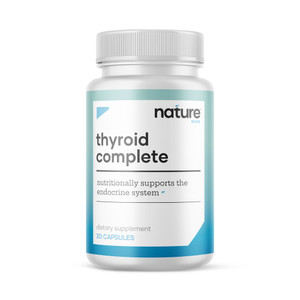Learn more from Dr. Bryan Ardis.

GET FREE SHIPPING ON ALL DOMESTIC ORDERS OVER $149!!
Learn more from Dr. Bryan Ardis.
Mother Nature's Immune Boosting and Healing Mineral!
Experience the ultimate immune and hormone boost with Selenium, formulated to increase immune cell production, balance thyroid hormones and increasing the speed of all healing needs.
Formulated to supply the essential nutrient your body needs to counteract the harmful effects of toxins we are exposed to daily and supplying the one mineral your bone marrow needs to produce the cells, that science calls, your immune system.
As an effortless way to support a healthy lifestyle, Selenium is an essential addition to any wellness regimen.
Experience the immune enhancing benefits of Selenium! In this unique supplement, we added Green Pea, Lentil, and Millet Powders to enhance the healing power and potency of Selenium, by providing you with the additional B vitamins your body needs to generate new healthy cells every single day.
Selenium: Our formula is packed with Selenium, in the form of Selenomethionine. This form of selenium is best for improving immune function and immune cell formation and hormone balancing!
INGREDIENTS
Selenium (as selenomethionine) 200mcg, Green Pea Powder 200mg, Lentil Powder 100mg, Millet Flour 100mg, Chlorophyll (as sodium copper chlorophyllin) 2mg
Other Ingredients: Vegetable cellulose (vegetable capsule), rice flour, vegetable stearate.
That's it! We don't hide ingredients. Everything that goes into every Nature Wins supplement is listed on the label.
WHO ITS FOR
SUGGESTED USE: Take one (1) capsule per day with water or as recommended by your healthcare provider.
Pregnant or Nursing: Please consult your healthcare practitioner before use.
Healthy Immune System. The human body requires Selenium to produce ALL of our immune system’s cells, including T-cells and B-cells for example, which help protect us from viruses, bacteria, fungi, and even cancer cell formation. Selenium is used by our bone marrow to produce our immune cells.
Improved Thyroid Health. Selenium is one of the two minerals the thyroid requires to make adequate levels of thyroid hormones. The other mineral is Iodine. To support optimum thyroid health and to maintain a health robust metabolism, Selenium supplementation should be supplemented daily!
Powerful Antioxidant To Prevent Chronic Diseases and Cancers. Selenium is NOT only utilized by the thyroid to balance thyroid hormones and is NOT only used by our skeletal bones to make immune cells to protect us. Your liver requires a healthy dose of Selenium daily to make the most powerful and most studied antioxidant our bodies make, that Super-Antioxidant is Glutathione! Your body cannot make adequate amounts of glutathione, without Selenium!
"Mineral and Vitamin deficiencies are the number one cause of ALL symptoms and ALL diseases on Earth. Selenium is a key essential mineral and nutrient that is required to support a healthy immune system and adequate hormone balance!
Selenium is also found on the Periodic Table of Elements, the graph we are all familiar with that science has discovered make up the list of elements that make up all life in the universe and on earth. Human beings require Selenium in small amounts every day from our food or in supplement form!
If you're serious about taking charge of your own well-being and becoming healthier than ever before, don't forget this one mineral— Selenium"
Dr Bryan Ardis
RESEARCH STUDIES
Ingredient #1: Selenium
Acts as a powerful antioxidant
Important for thyroid health
Boosts your immune system
Ingredient #2: Green Tea Powder
Improves cognitive function
Helps prevent heart disease
Helps you live longer
Ingredient #3: lintel Powder
Acts as a powerful antioxidant
Protects your heart
Ingredient #4: Millet Flower
Rich in antioxidants
Ingredient #5: Sodium Copper Chlorophyllin
Skin healing
Detoxification and cancer reduction
I love that you sell this important nutrient. I love it. Looking forward to wonderful results. I loved the video Dr Ardis did on Selenium.
I haven't noticed any difference as yet, but I also haven't been habitual in taking them. I do anticipate a benefit, even if small.
As far as I know it's working.
the selenium the colour of pills is a light green till is that the way they are please let me know thanks jim
the selenium the colour of pills is a light green till is that the way they are please let me know thanks jim
I started using the Thyroid / Selenium combo and it has worked really well so far. I couldn't get the Zinc at the same time. Now that I want to re-order monthly, the Selenium is sold out. I feel like I need to wait to order all 3 at the same time ....... but worried that they will be available.
I am a a great advocate for taking supplements. I have learned so much by listening to Dr. Ardis and what the products do for you. I am all for staying away from the doctors office and hospitals. Try some, stay healthy!
Just started on this supplement and am hoping for positive results after awhile.
I know Dr. Ardis will provide top quality products at a competitive price, and Nature Wins Selenium is among his best supplements!